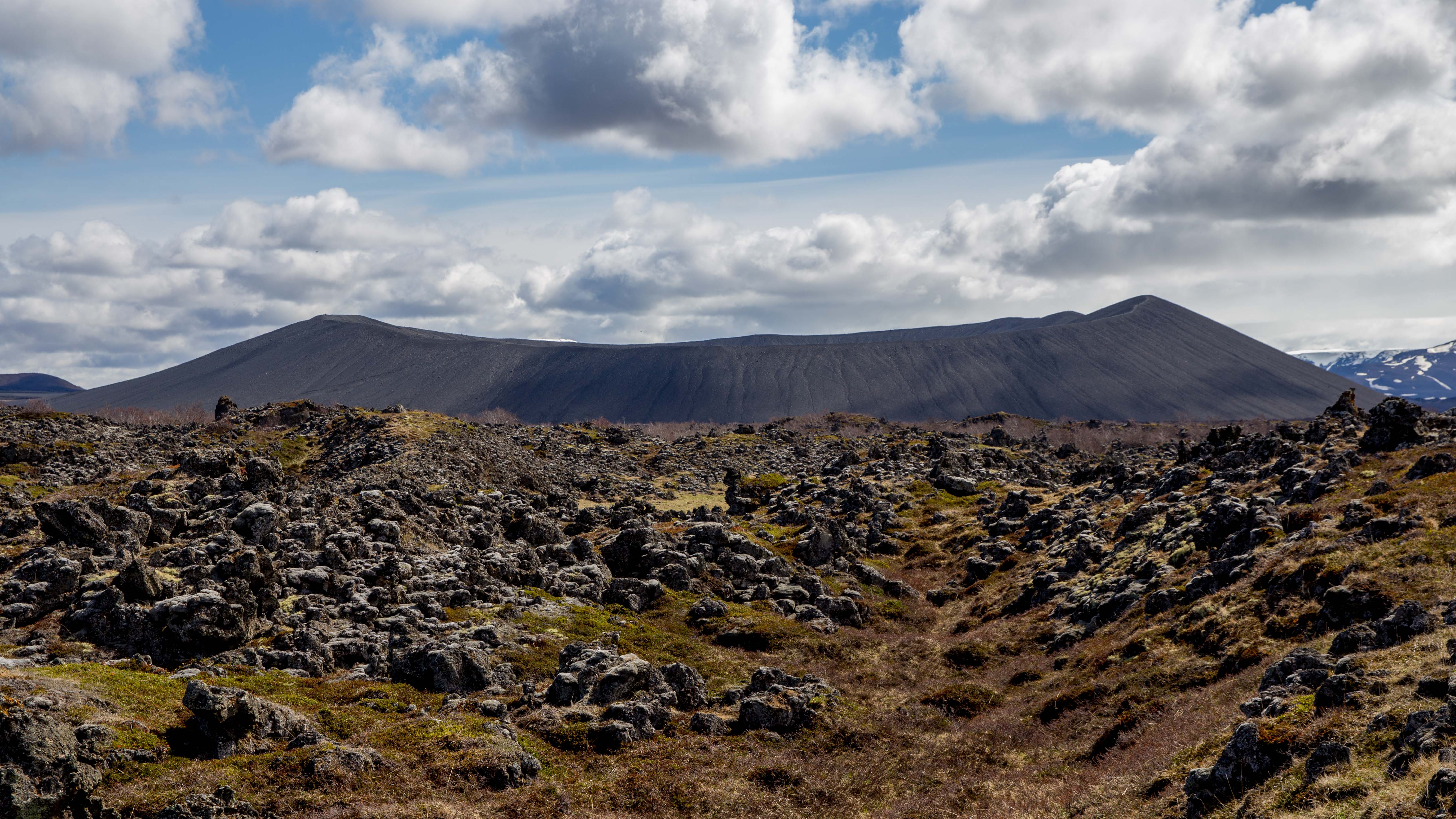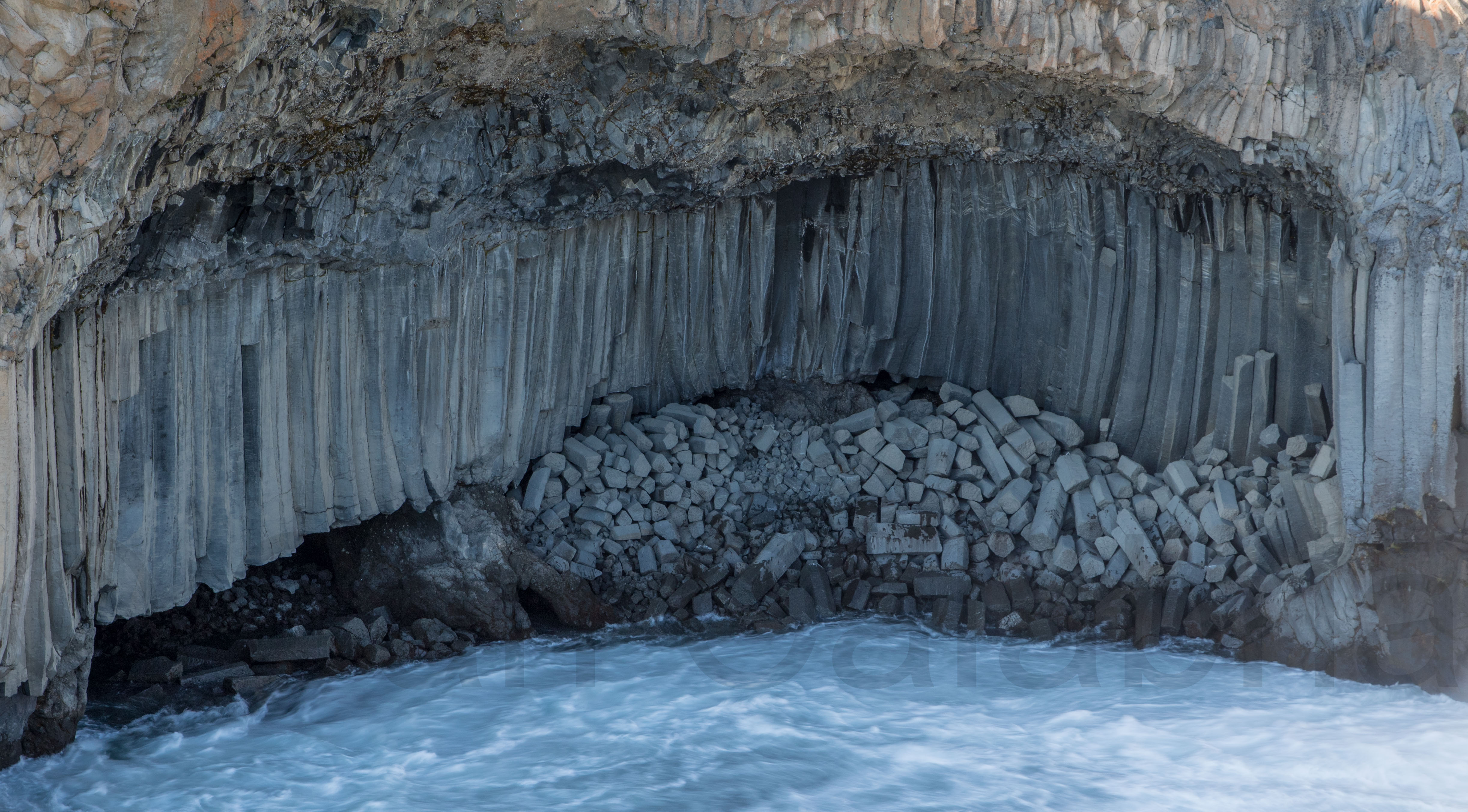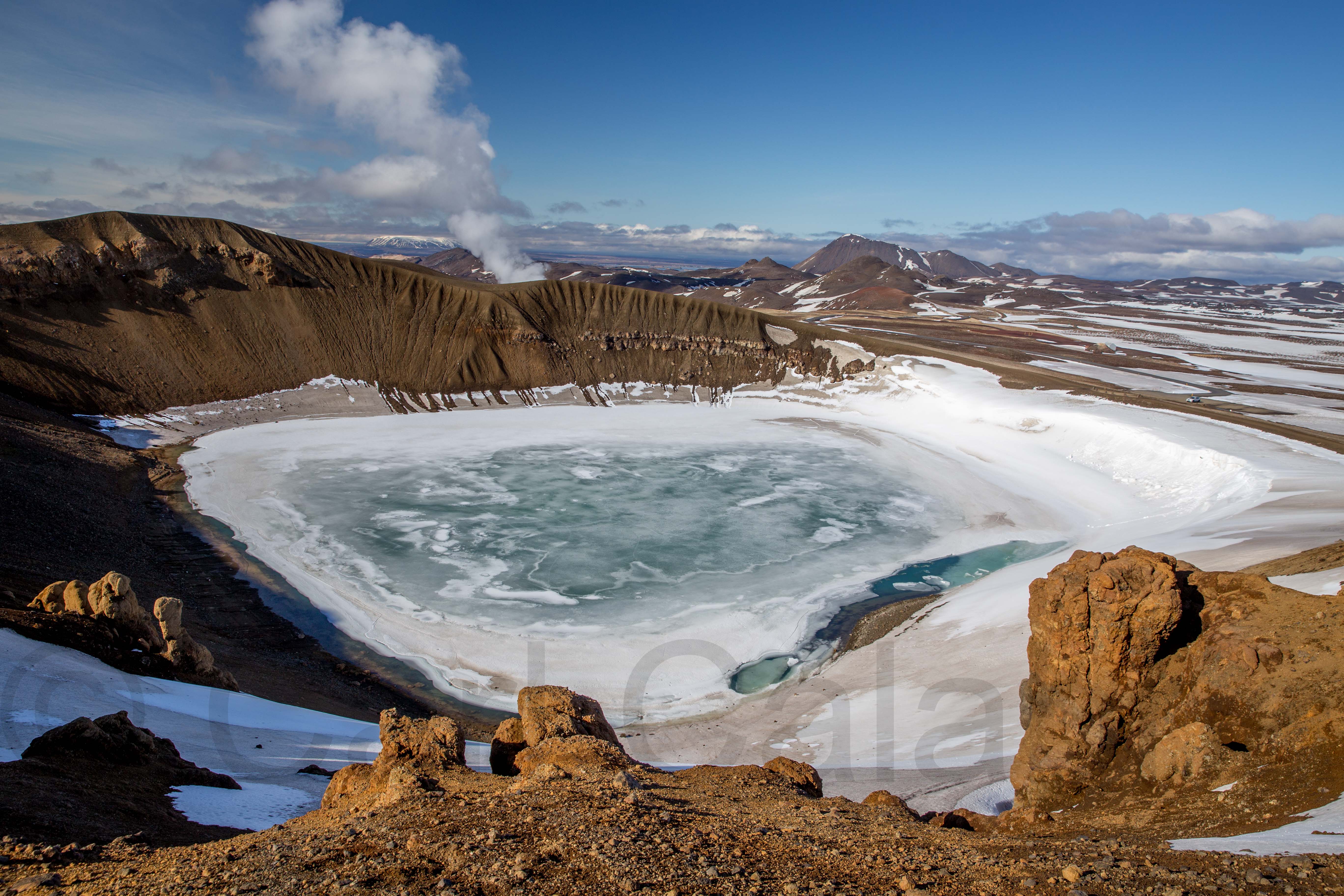
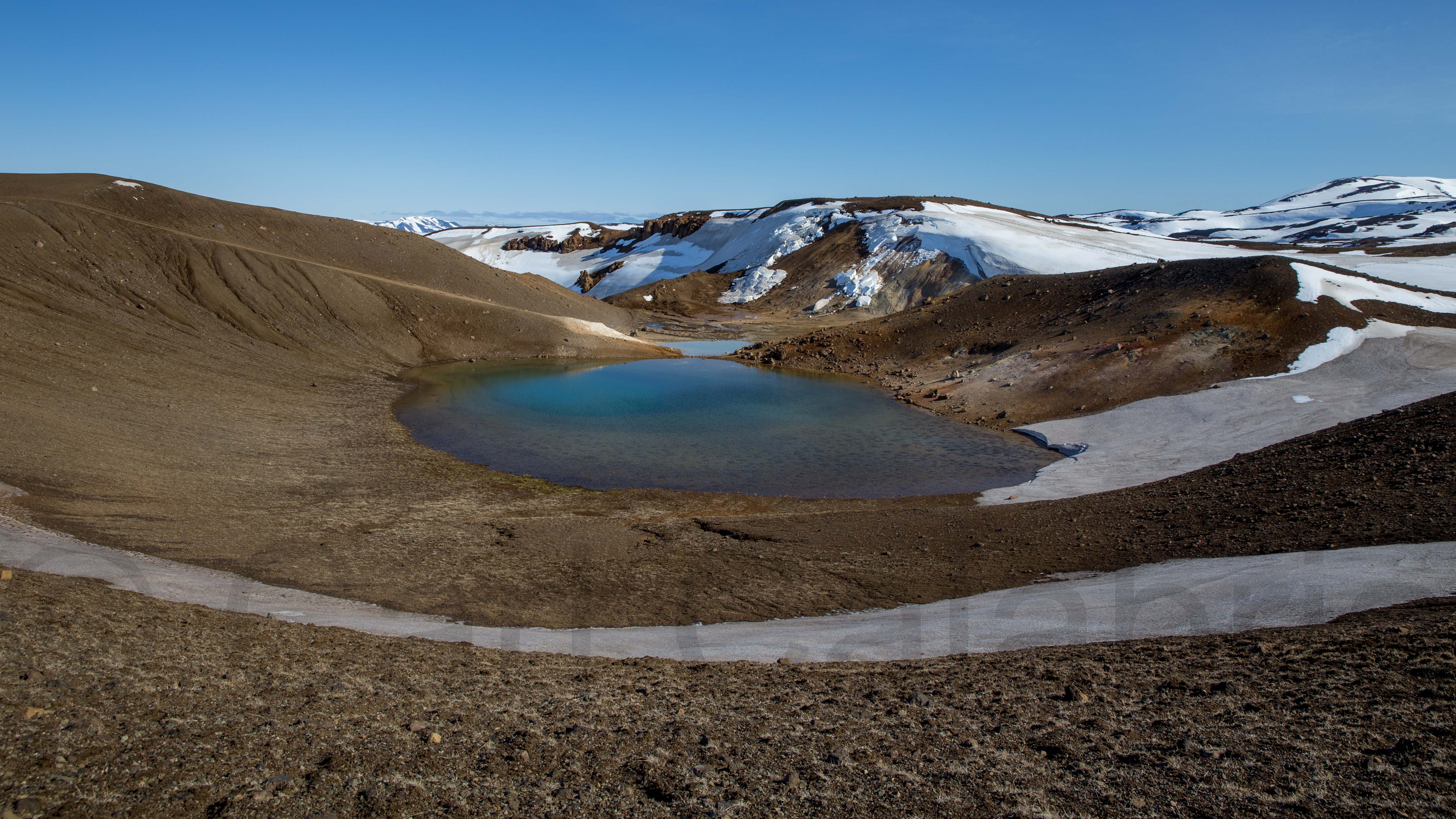
Krafla and Leirhnjúkur are volcanoes east of Lake Mývatn. I climbed to the top and around the rim of Krafla whose caldera is now filled by a lake. Regrettably it was still frozen and covered by snow. Fortunately, the lake in the adjacent Viti explosion crater had thawed, revealing the beautiful aquamarine water. It took another hour to hike mostly through deep snow to a vantage point on the rim of the Leirhnjúkur (“clay peak”) crater, a rhyolite formation, rising about 50 m above the surrounding lava field to photograph its lake passing some interesting volcanic fissures and craters along the way.
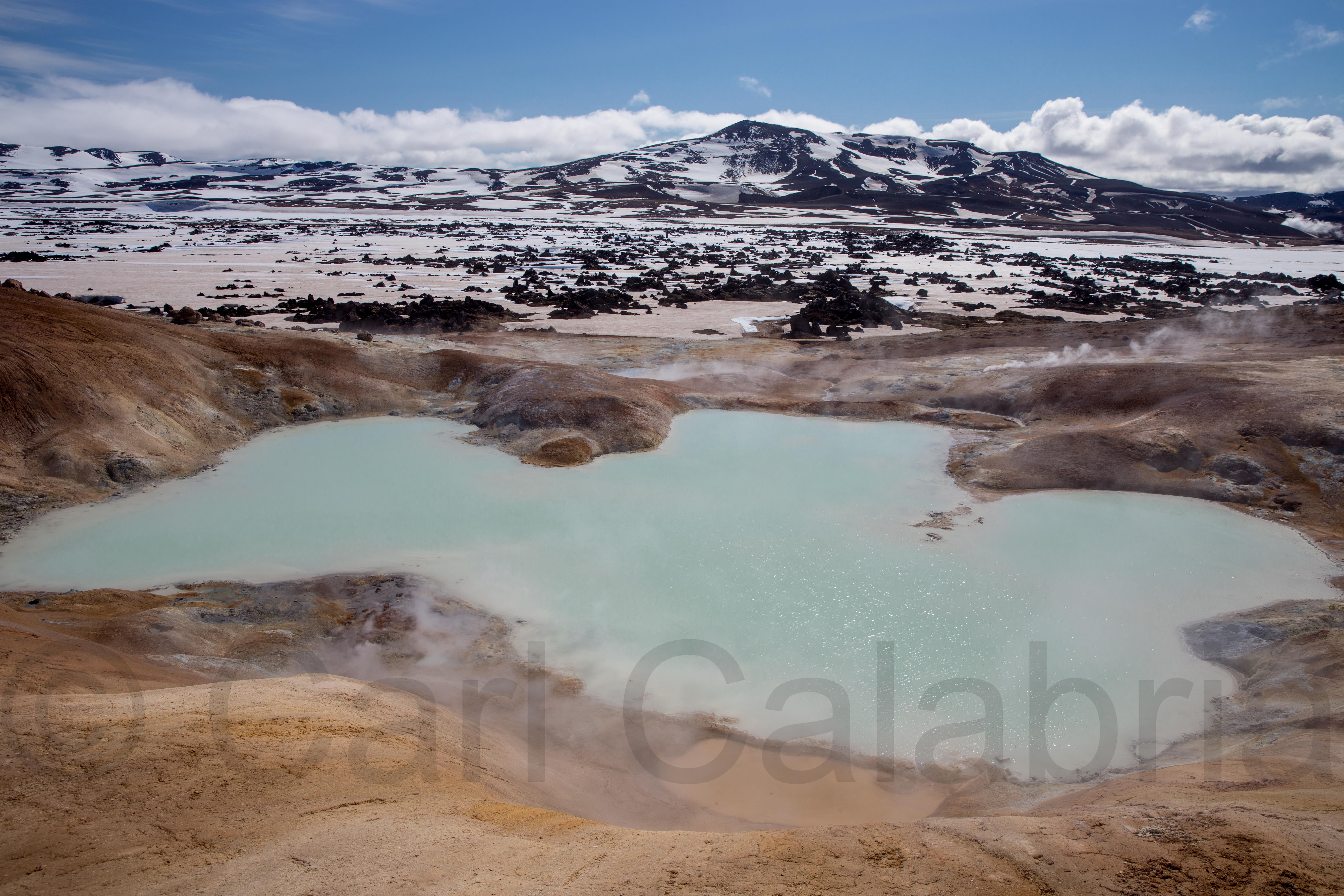
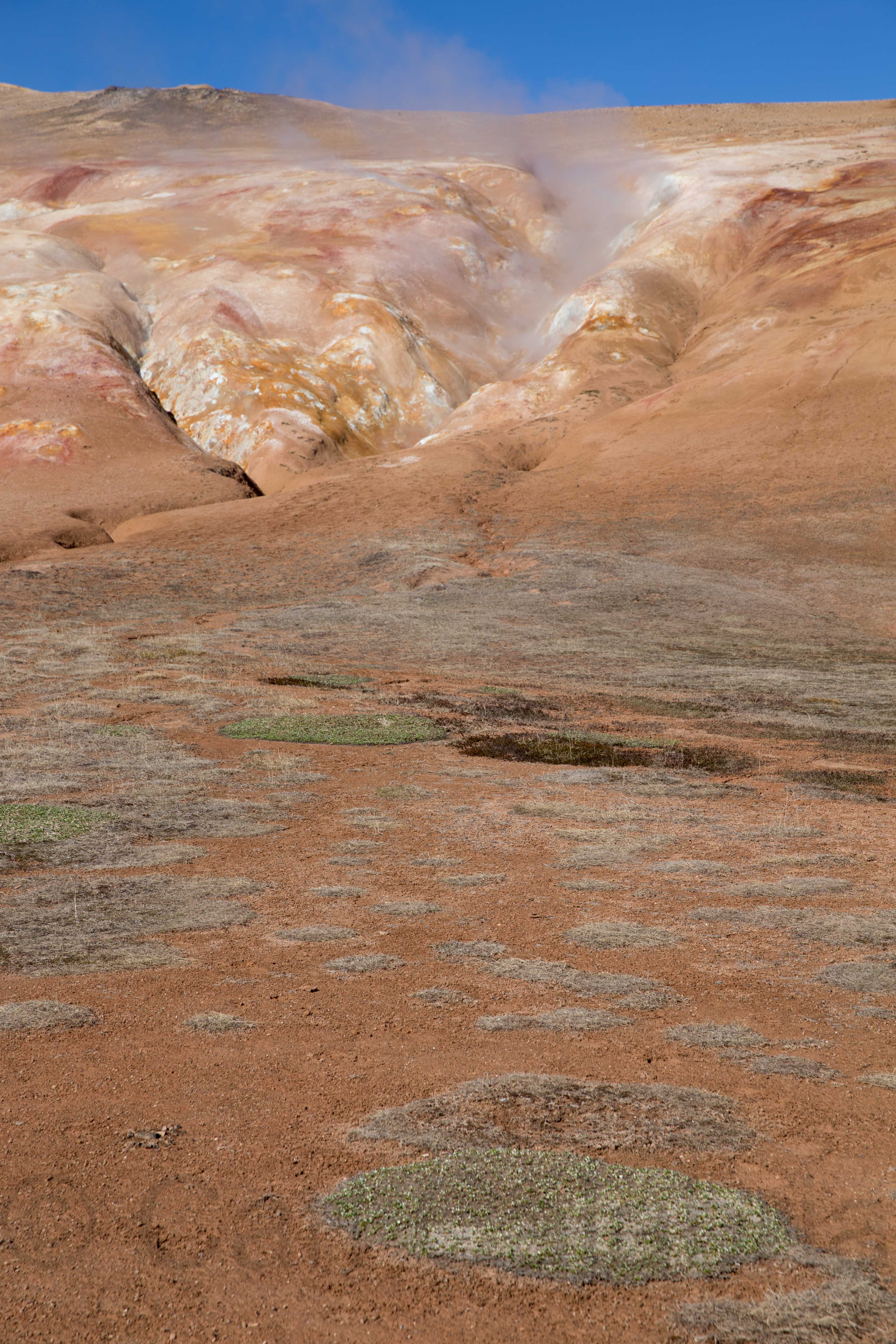

Game of Thrones fans may recognize Grjótagjá as the place where John Snow is, ahem, deflowered by Ygritte. It is a wonderful little subterranean cave that has a geothermal pool within.

The nearly symmetrical crater of Hverfell demanded that I make the 1500 foot ascent to see what was inside. The effort was well worth it, offering views of both the colder and surrounding mountains.
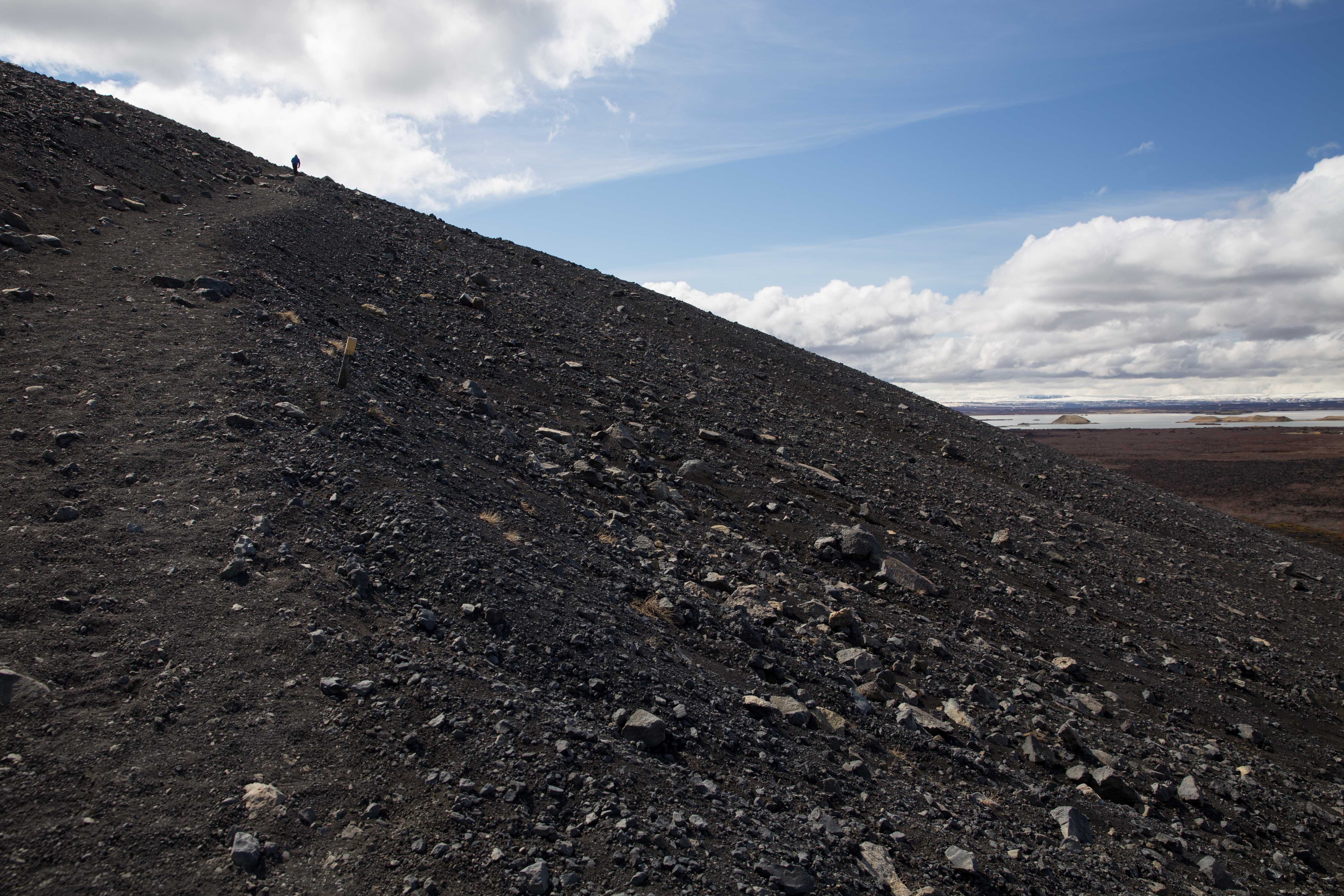
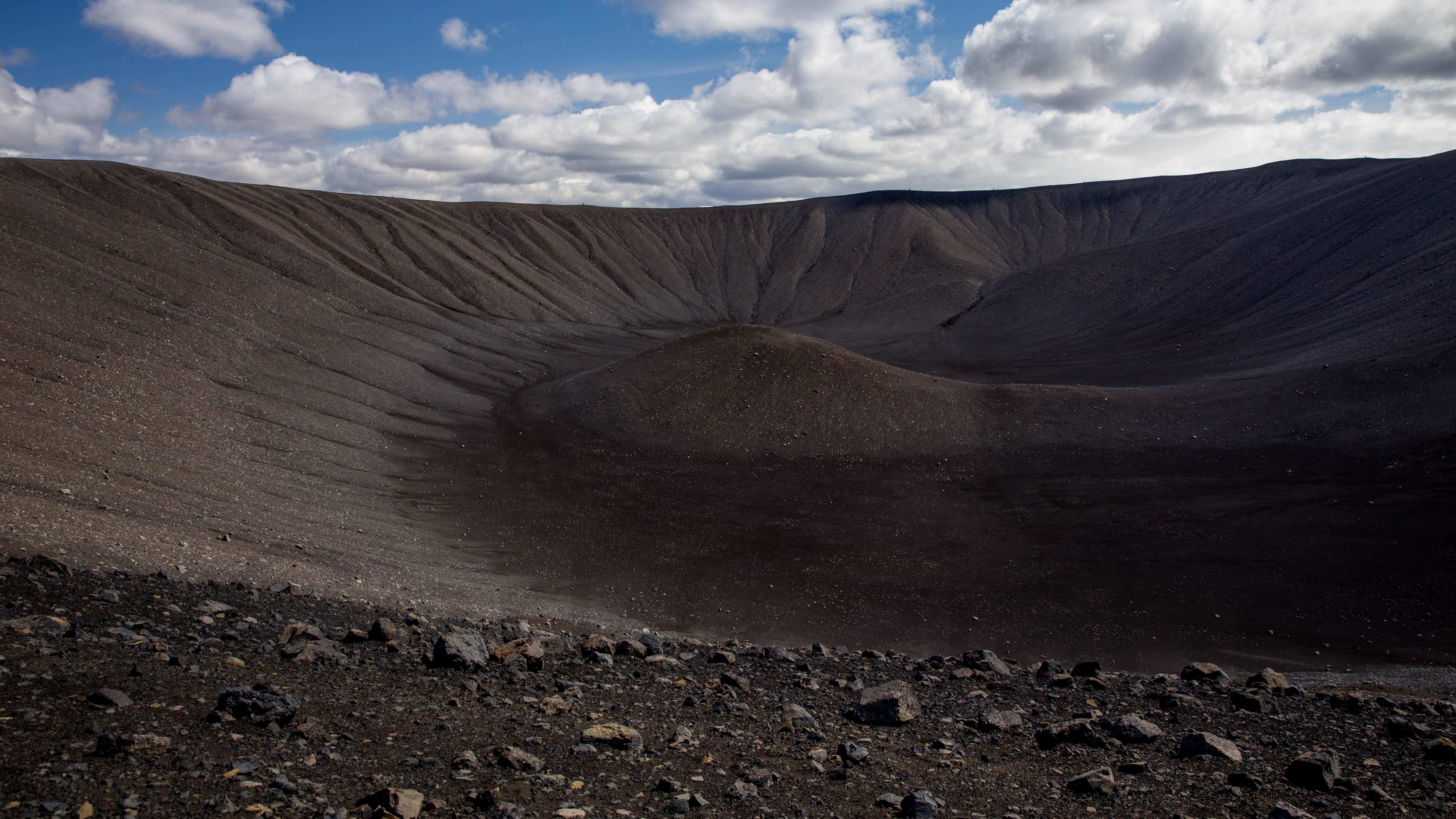
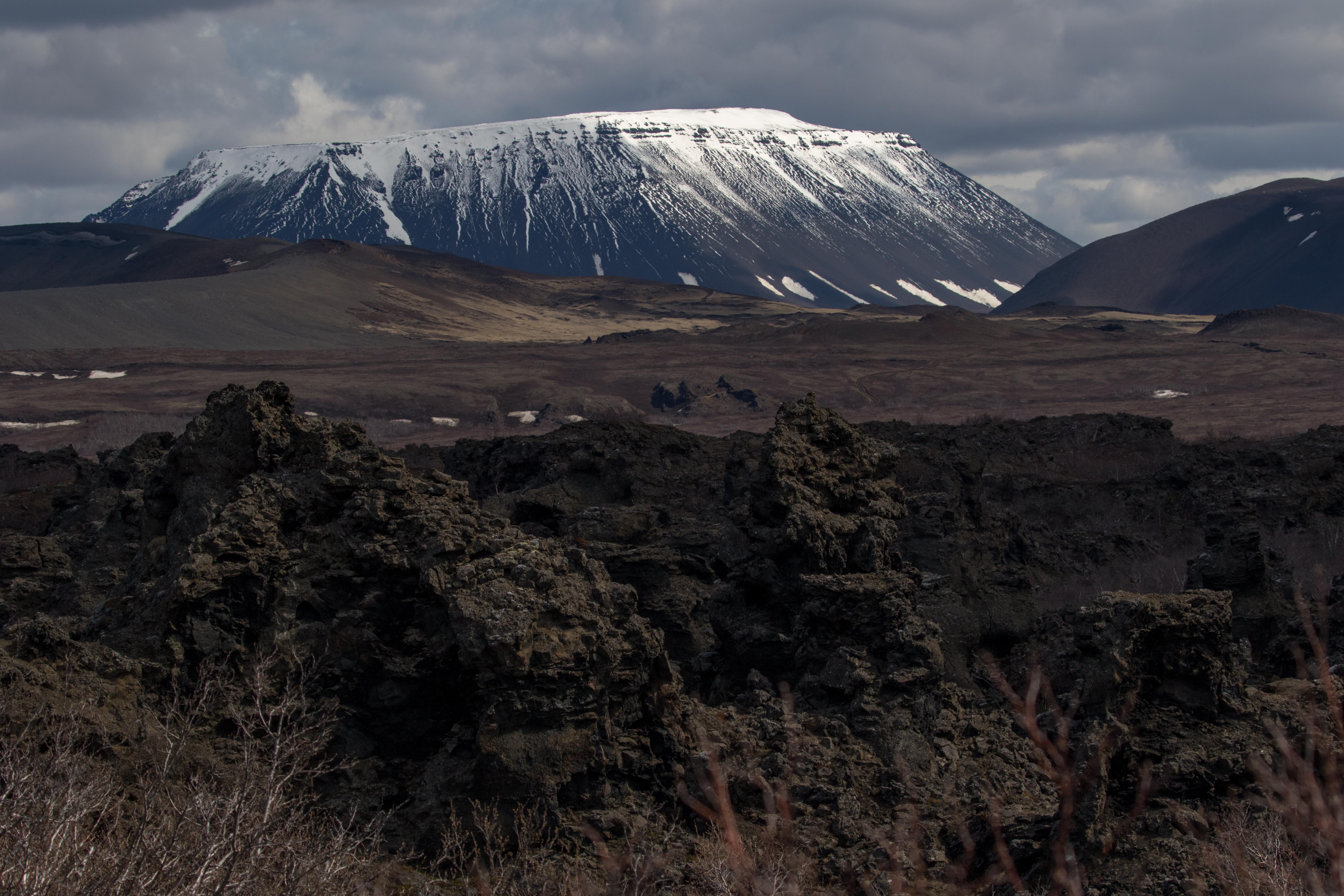
Goðafoss means “Waterfall of the gods” and the waterfall got its name in the year 1000 when Iceland converted from the old ásatrú-religion (norse heathenry) to Christianity. According to the Book of Icelanders, the local chieftain and lawspeaker, Þorgeir Ljósvetningagoði, was given the authority to decide whether Christianity was to be adopted in Iceland. After the decision was made, it is said, he threw his statues of the old Viking gods into the waterfall, as a symbol that the old religion had been discarded.
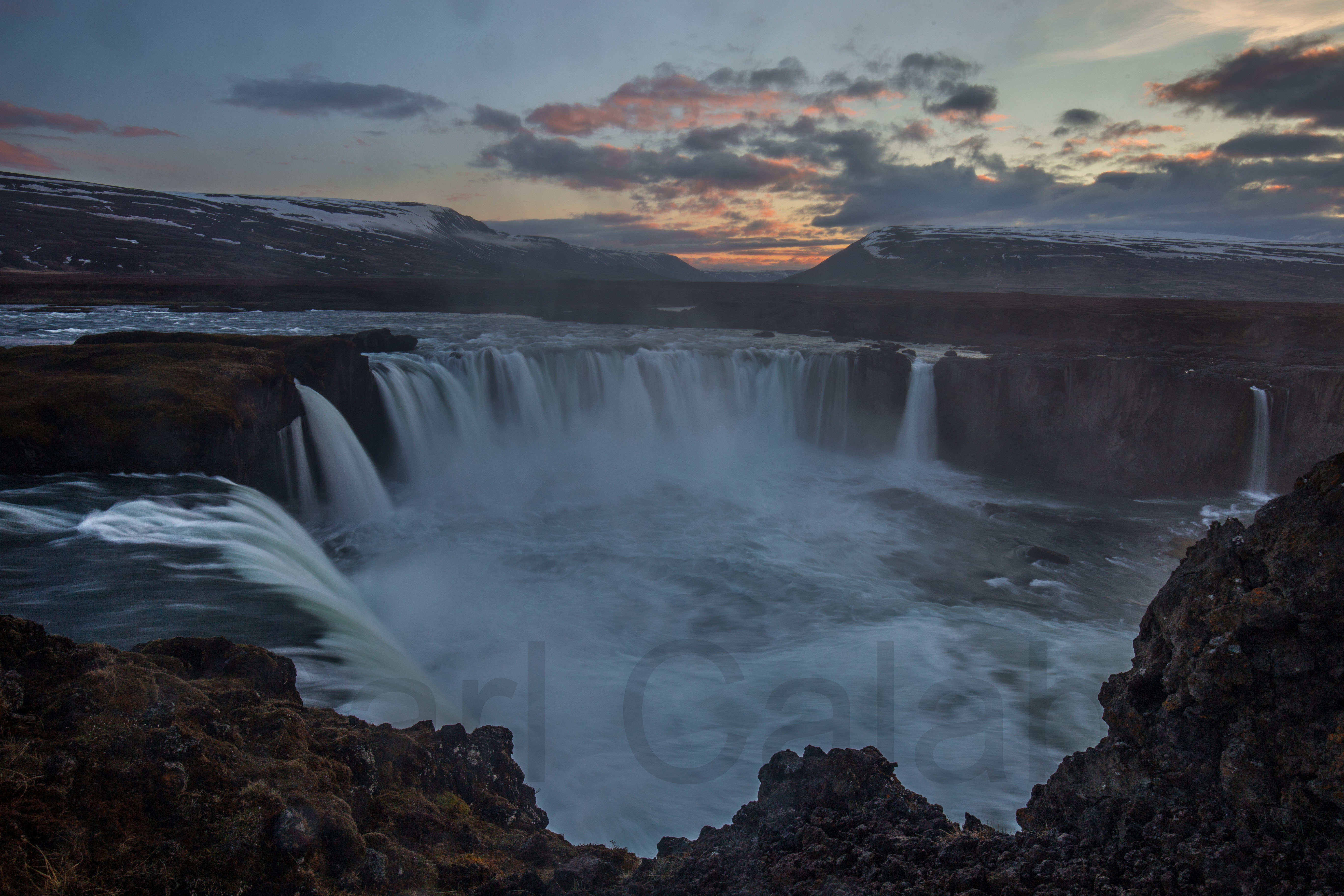
Aldeyjarfoss, about 45km upstream of Goðafoss on the Skjálfandafljót River, falls in a rather narrow but powerful current into a large round basin framed by impressive rows of hexagonal basalt columns. It was one of my favorite destinations because of its isolation. Unlike the other falls, I had this one to myself with not another soul to be found for ten miles.


